More about: 13 Best Artworks of the MoMa New York
The Museum of Modern Art (MoMA) is undoubtedly the world's most important museum of modern art. But with a collection of almost 200,000 pieces, we run the risk of getting lost and ending the visit without having seen the essential works. Here are the essential works so that you can make the most of your visit.
It is difficult to decide which are the best works. For this reason, I recommend that you check the MoMa map before starting your visit to see which floor contains the largest number of works that interest you. To make your visit easier, the most popular paintings at the MoMA are on the fourth and fifth floors.
1. Starry Night, Van Gogh
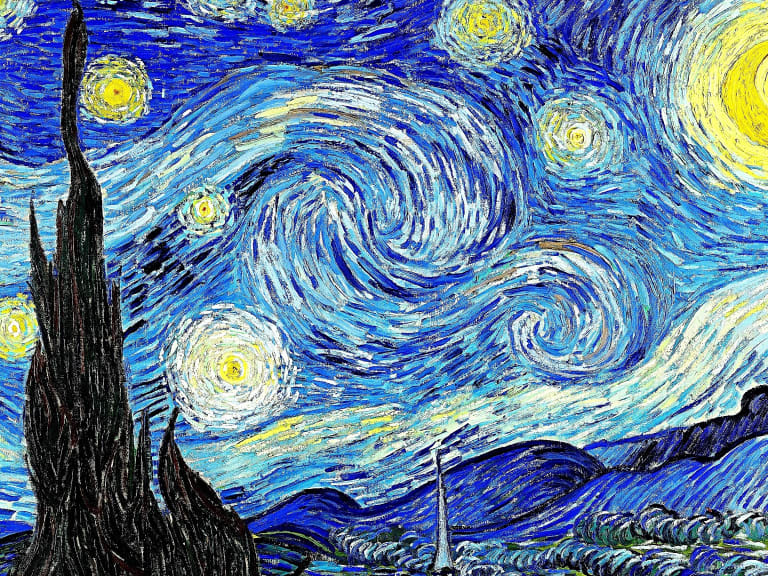
If you book your ticket to the MoMa you will have the chance to see Starry Night, considered Van Gogh's quintessential work. It has been in the MoMa's permanent collection since 1941 and was acquired through Lillie P. Bliss Bequest.
*Starry Night is an oil on canvas and was painted by Van Gogh in a studio on the ground floor of the Saint-Paul-de Mausole asylum. The view has been identified as that from his bedroom window and he painted it at different times of the day: dawn, moonrise, on sunny, cloudy, windy or rainy days, and on sunny, cloudy, windy or rainy days.
This work is located on... the fifth floor and is the work most visitors come to see.
2. The Persistence of Memory, Salvador Dalí

*Spanish painter Salvador Dalí 's The Persistence of Memory is also known as The Soft Clocks or The Melting Clocks, and another of the key works you will see if you book your MoMa ticket.
This oil on canvas, dating from 1931 and on view at MoMa since 1934, is a surrealist painting that depicts a subjective vision of temporality. The technique is precise and the drawing academic, with pure lines. A curiosity: Dalí acknowledged that he was inspired by Camembert cheese when he painted it.
This work is on... the fifth floor of the MoMa.
3. Les Demoiselles d'Avignon, Pablo Picasso

*Les Demoiselles d'Avignon was painted by Pablo Picasso in 1907 and depicts, in Cubist style, five Barcelona prostitutes in the Rue d'Avinyó.
This painting, which you can see if you book your MoMA ticket, was originally exhibited at the Galerie d'Antin (Paris) in 1916. Picasso subsequently kept it in his studio until it was acquired by Jacques Doucet in the early 1920s and exhibited at the Petit Palais Museum in 1925. It was subsequently purchased by MoMA and is still one of the collection's favourite pieces.
This work is located on... the fifth floor of MoMA.
4. Campbell's Soup Can, Andy Warhol
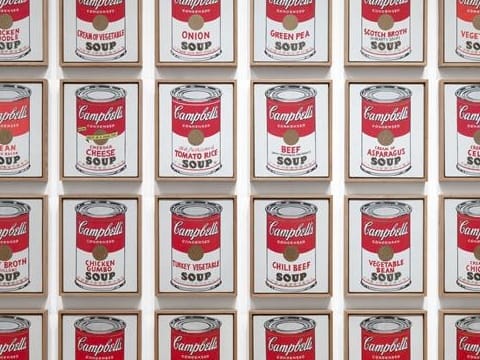
*Campbell's Soup Can" is a work of art produced by the American artist Andy Warhol in 1962. Also known as 32 Campbell's Soup Cans.
This work, which you can admire if you book your ticket to MoMA, was Warhol's first solo exhibition in an art gallery as a professional artist. The work consists of 32 canvases and depicts each of the varieties of canned soup that the company offered at the time. An exponent of pop art, it has become a world-famous image and has been emblazoned on numerous merchandising items.
This work is on... the fourth floor of the MoMa.
5. Water Lilies, Claude Monet

*The Water Lilies, by the Impressionist Claude Monet, is one of a series of paintings that the painter produced in the French village of Giverny towards the end of his life.
In addition to their large format, these canvases are characterised by the fact that neither the shore of the lake where the water lilies are lying nor the horizon line can be distinguished. In fact, it is a close-up painting precisely because of this vaporisation of the contours.
This work can be found on... the fifth floor of the MoMa.
6. The Lovers, René Magritte

*The Lovers, by René Magritte, is on the fifth floor of the MoMa, in the Richard S. Zeisler Collection.
*The Lovers, dating from 1928, is the first work in a series of four variations. A disturbing image that does not leave visitors indifferent. There are different versions of the meaning. Some say it depicts a terrible memory of the painter, who as a teenager witnessed his mother's corpse being pulled out of the river Sambre with her wet shirt wrapped around her head.
In fact, it is very common in Magritte's works to see figures with their faces covered by a veil. It is also said that it may be a metaphor for desire, impossible love, forbidden love or past loves.
This work is located on... the fifth floor of the museum.
7. Gas Station, Edward Hopper

Gas Station, by Edward Hopper, is a series of several gas stations seen by the artist, which you can also see if you book your MoMa ticket.
The American painter was one of the leading representatives of 20th-century realism. Even so, his pictorial work was not well received by both the public and the critics of the time, and he was forced to work as an illustrator in order to survive.
It was after his death that Hopper began to be recognised as one of the great masters of 20th-century art. Today, his work has become an icon of modern life and society.
This work is located on... the fifth floor of the MoMa.
8. Dutch Interior, Joan Miró

*Dutch Interior is a series of three paintings produced by Joan Miró in 1928 after a trip to Belgium and the Netherlands, where he was inspired by 17th-century Dutch painting.
It is one of the most representative works in Joan Miró's oeuvre and is characterised by a search for the essential and a purification of the expressive vocabulary that characterised his earlier works.
This work can be found on... the fifth floor.
9. Self-portrait with cropped hair, Frida Kahlo

*Self-Portrait with Severed Hair is Frida Kahlo 's first self-portrait after her divorce from Diego Rivera.
The self-portrait represents the change in her life after the divorce. Kahlo is seated in the centre of the work. She appears in a man's large, dark suit. Self-portrait with cropped hair was Kahlo's first work at the MoMa.
This work is located on... the fifth floor.
10. One: Number 31, Jackson Pollock
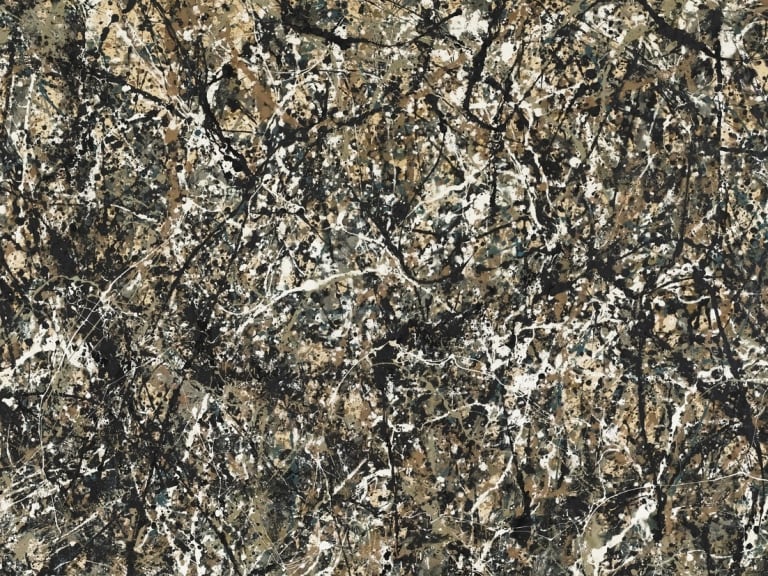
Jackson Pollock 's One: Number 31 is one of the most prominent examples of his "drip" technique: an abstract expressionist drip-style painting, in which he dropped, dripped or threw paint onto a canvas lying on the floor.
This painting, dating from 1950, is one of Pollock's largest paintings and you can admire it if you book your MoMa ticket.
This work is located on... the fourth floor.
11. Bicycle Wheel, Marcel Duchamp

Bicycle Wheel predates Marcel Duchamp 's use of the word "readymade", a term he coined after moving from Paris to New York in 1915.
This work, which represents the earliest example of this kind of revolutionary artwork, is located on the fifth floor and is considered the first kinetic sculpture. The artist denied that his invention had any purpose, although it is known as the first of his found art works.
This work is located on... the fifth floor of the museum.
12. The Love Song, Giorgio de Chirico
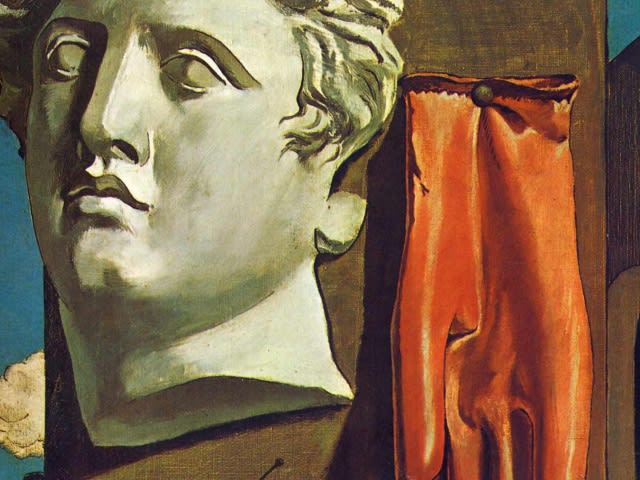
*The Love Song is one of Giorgio de Chirico's best-known works and an early example of the Surrealist style, painted ten years before the movement was born.
In this work, Chirico wanted to express something of the reality he saw hidden beyond appearances. Shrouded in an atmosphere of anxiety and melancholy, the humanoid forms, empty architecture, gloomy passages and eerily elongated streets evoke the profound absurdity of a universe torn apart by the First World War.
This work is located on... the fifth floor of the MoMa.
13. Drowning Girl, Roy Lichtenstein

*Drowning Girl is considered one of Roy Lichtenstein's most significant works, a painting that you should see at your leisure if you book your ticket to the MoMa.
For this pop art work, which dates from 1963, he was inspired by the comic Run for Love, published by DC Comics in 1962. The work has been described as a "masterpiece of melodrama" and depicts a teary-eyed woman in a turbulent sea. In a "tragic situation", the woman is emotionally distraught, apparently over an affair.
This work is located on... the fourth floor of the MoMa.
How to see the MoMa collection floor by floor
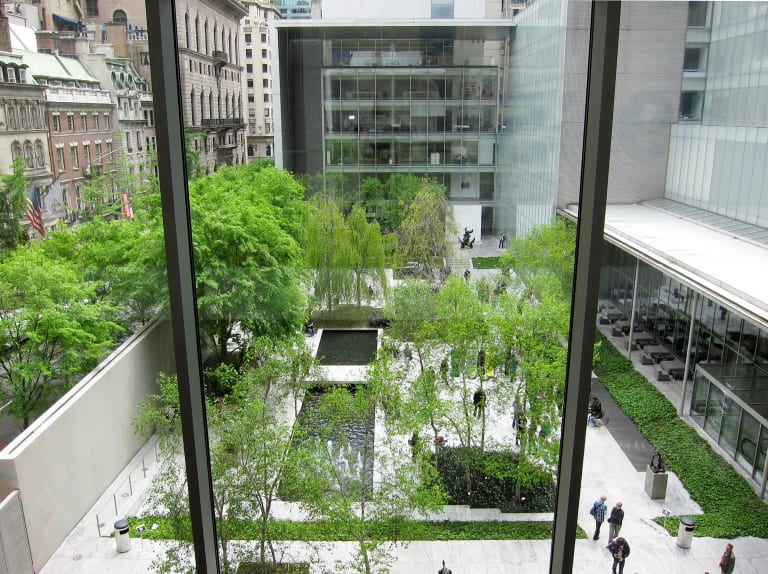
The MoMa collection is divided into six floors. Below you will find information about each floor, but I will tell you that floors 2, 3, 4 and 5 house most of the collection.
- The first floor is used as a hall and is where you'll find the reception, ticket offices, restaurant, shop, sculpture garden...
- The first floor focuses on the collection from 1980 to the present: special exhibitions, prints, illustrated books, audiovisual media. It also houses the shop and cafeteria.
- The third floor includes drawings, photography, architecture and design from various periods.
- The fourth floor houses framed paintings and sculptures from 1940 to 1980: Andy Warhol, Jackson Pollock, Mark Rothko, Yayoi Kusama, Japer Johns, Robert Rauschenberg, Roy Lichtenstein...
- The fifth floor houses paintings and sculptures from 1880 to 1940: Vincent Van Gogh, Pablo Picasso, Claude Monet, Paul Cézanne, Henri Matisse, Frida Kahlo, Piet Mondrian and .....
- The sixth floor is for special exhibitions and also houses a shop.
If you book your MoMa ticket, we recommend that you start your visit on floors 4 and 5, where the main works are located.
MoMA Interactive Guide
The entrance ticket to MoMA includes an interactive guide that suggests some thematic itineraries, depending on the type of public (adults or children) and the time you have available. This tool makes the visit much easier if you have limited time.
Recommendations for seeing the best works at the MoMa without the crowds
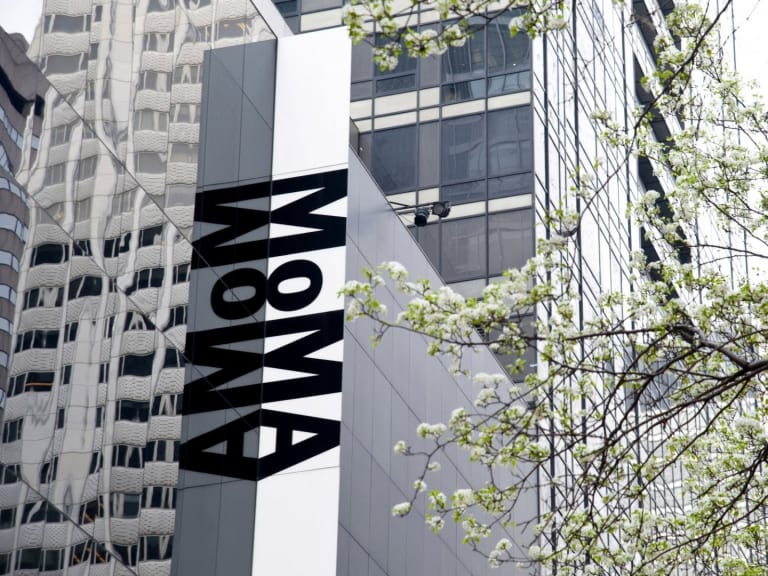
1- Buy your ticket in advance: The MoMa receives a large number of visitors every day. It is important to book your ticket in advance to avoid long queues and unnecessary time wasting at the ticket office. The cheapest tickets for the MoMa are priced from 28 euros at Hellotickets and are a perfect option if you want to avoid wasting time at the ticket office.
2- Check the map: It is advisable to check the map before starting the visit to see which floor contains the most works that interest you and to start the tour in this area. You will enjoy it more if you see them at the beginning of the visit!
3- Go early in the morning: It is preferable to visit the MoMa early in the morning to have as much time as possible to enjoy the collection at your leisure.




